|
|
Post by hcarlton on Jun 16, 2014 16:13:59 GMT
The D. schizandra plantlets are finally getting some size, and tentacles 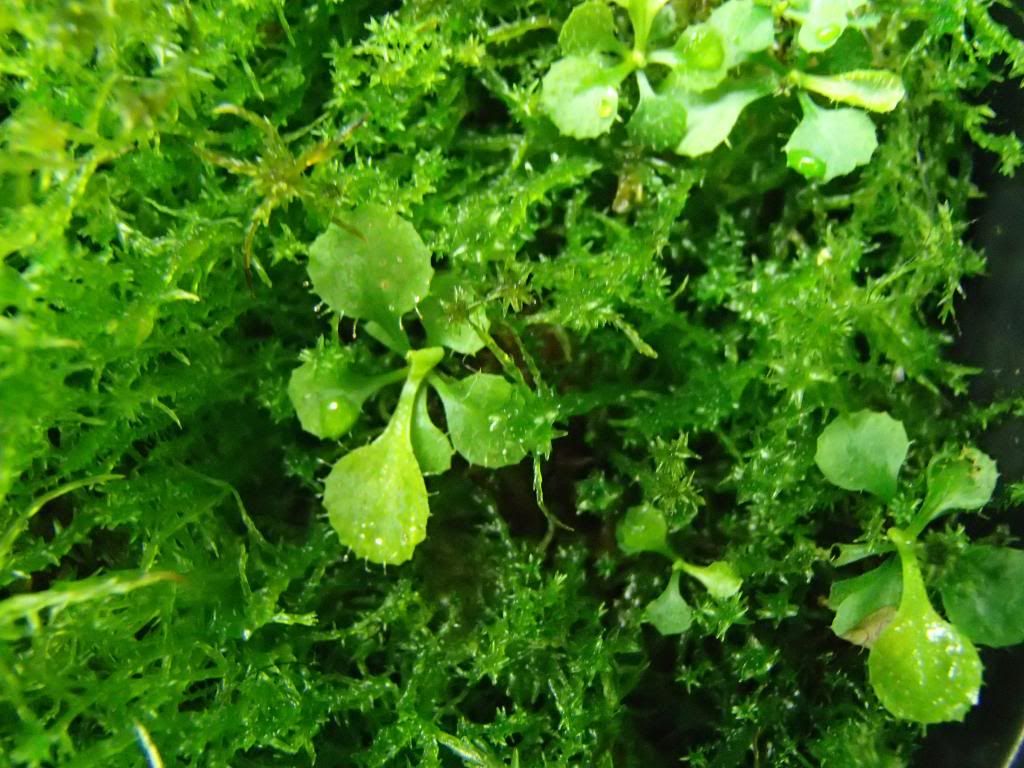 D. indica scented flower  D. 'Dreamsicle', and at the base you can see the results of my propagation of this plant 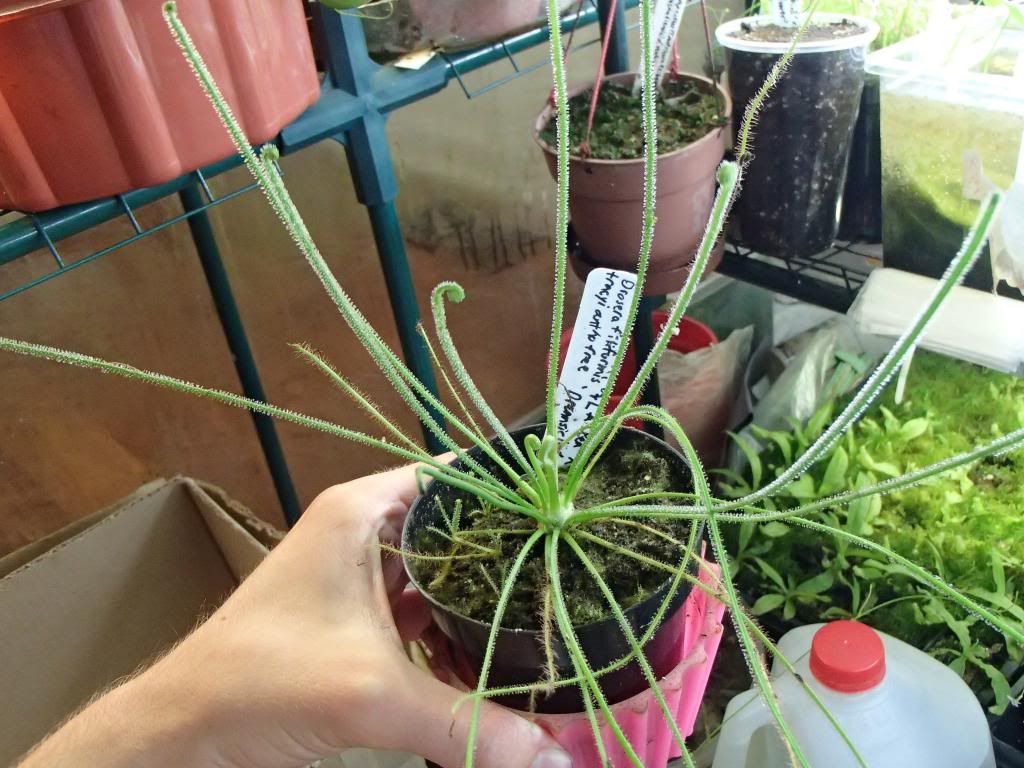 D. graomogolensis 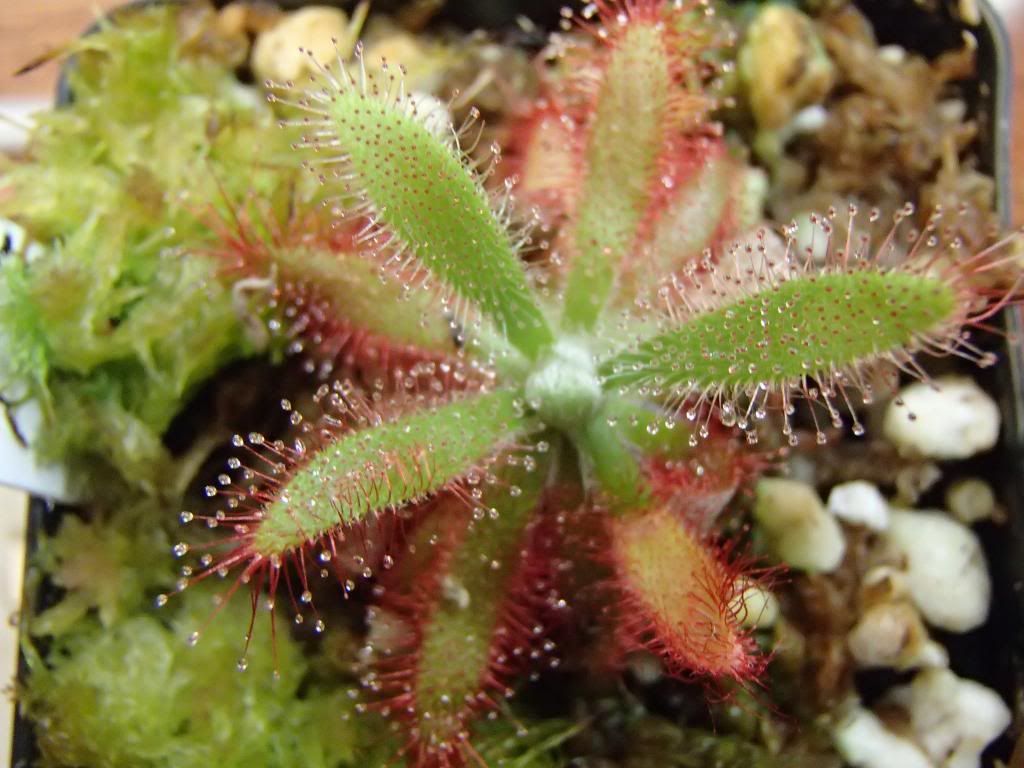 D. sessilifolia 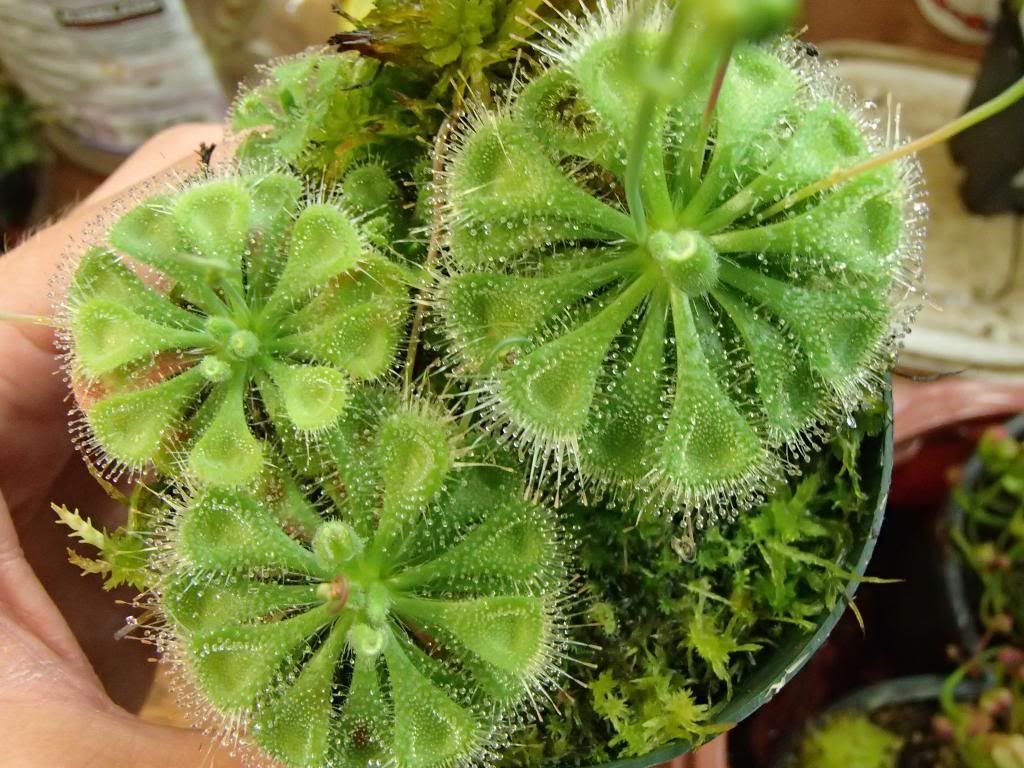 D. ultramafica x spatulata 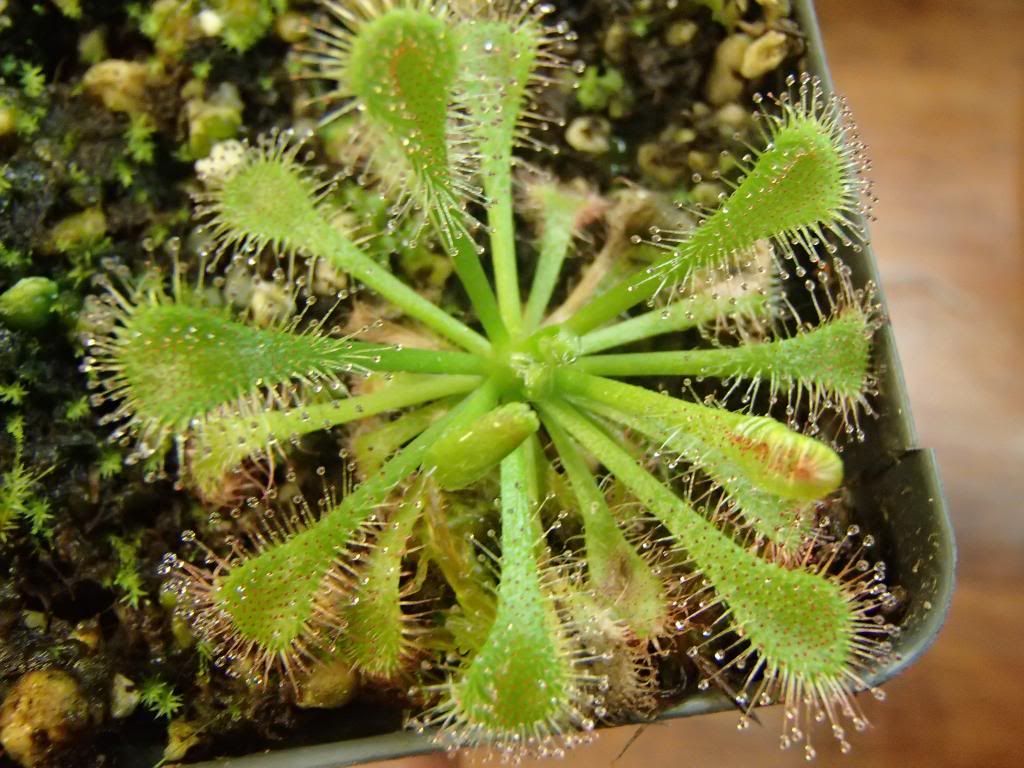 Many, many, many D. binata binata Waihohonu Desert Rd. NZ 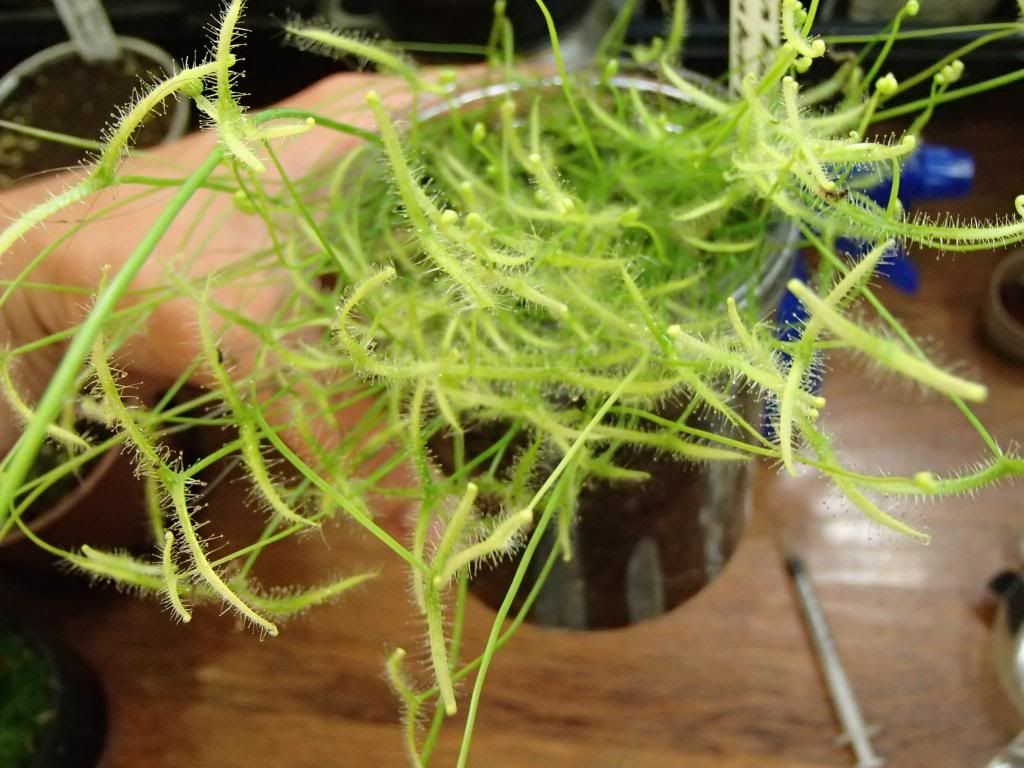 The current largest of the spatulata 'Tamlin' x tokaiensis clones 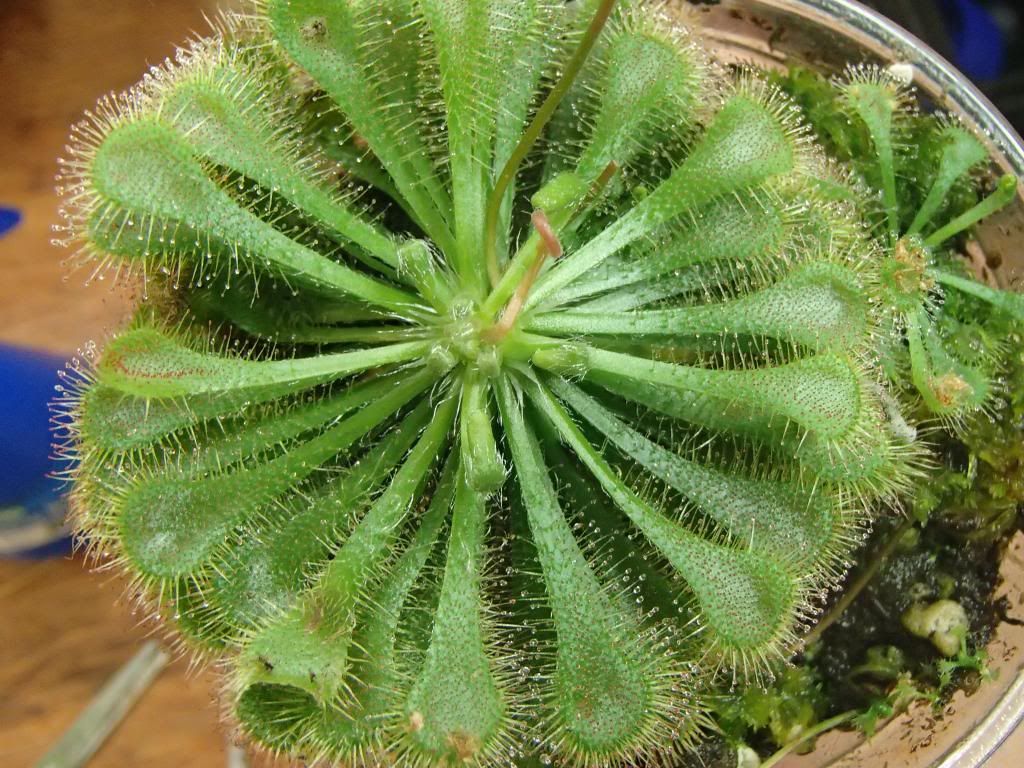 filiformis FL Giant flower 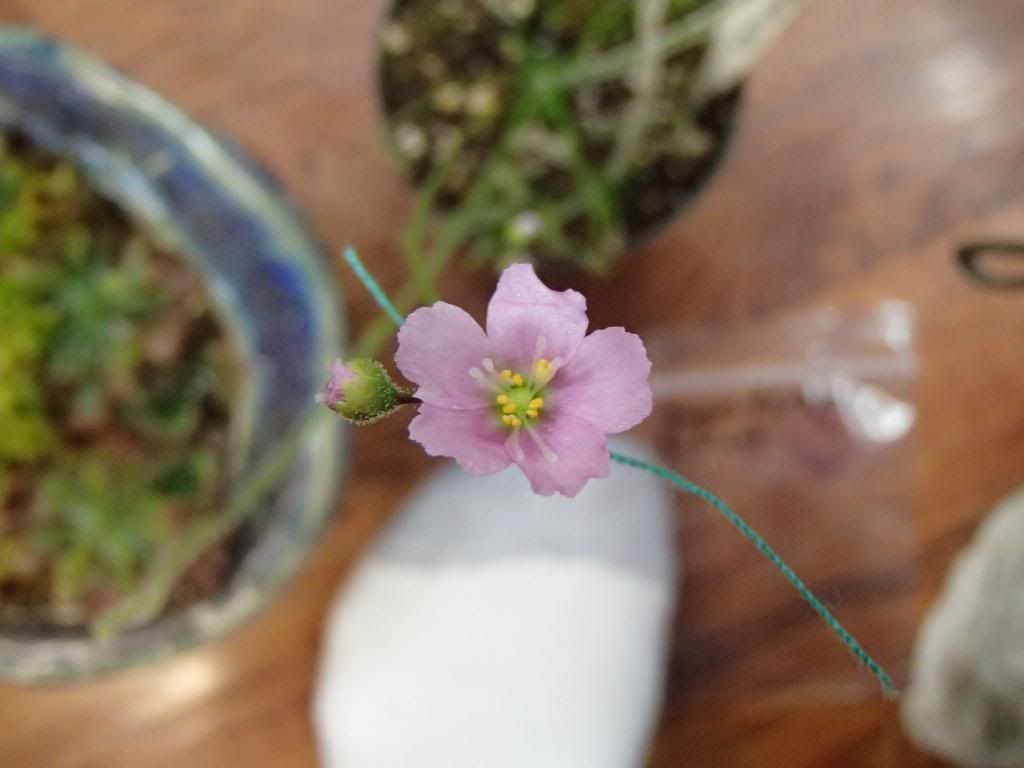 And my ever-weedy D. spatulata "white flower" 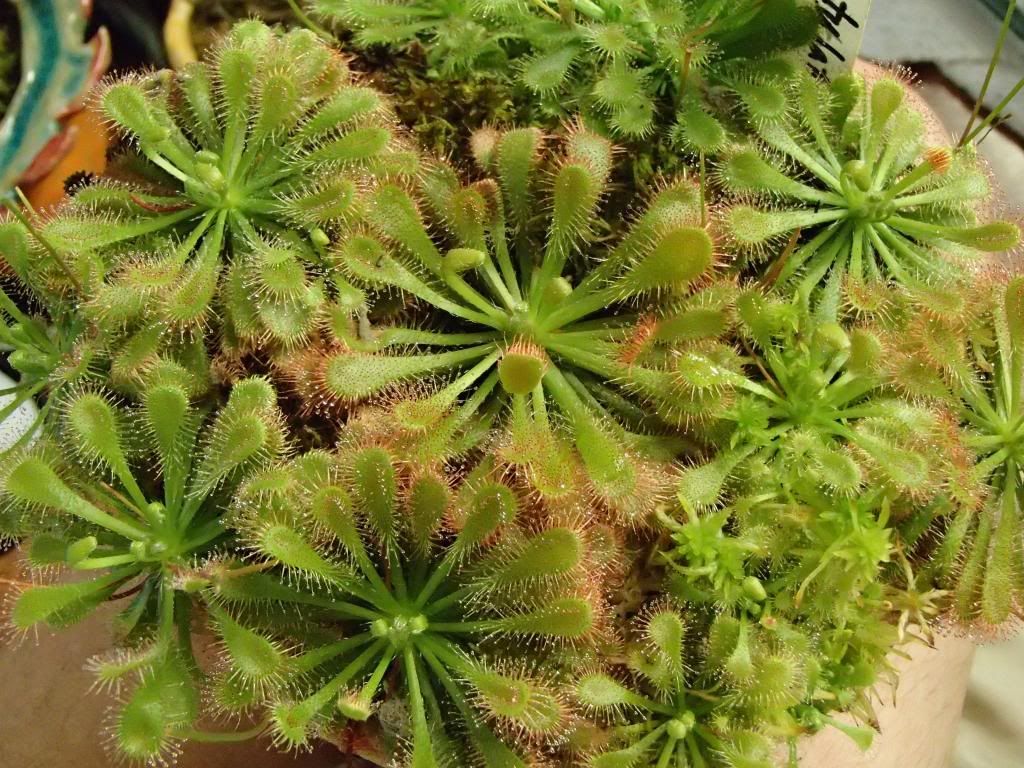  |
|
|
|
Post by hcarlton on Jun 30, 2014 18:18:30 GMT
Not much to share, but the D. spatulata "Beenak, Victoria" plants have begun to flower 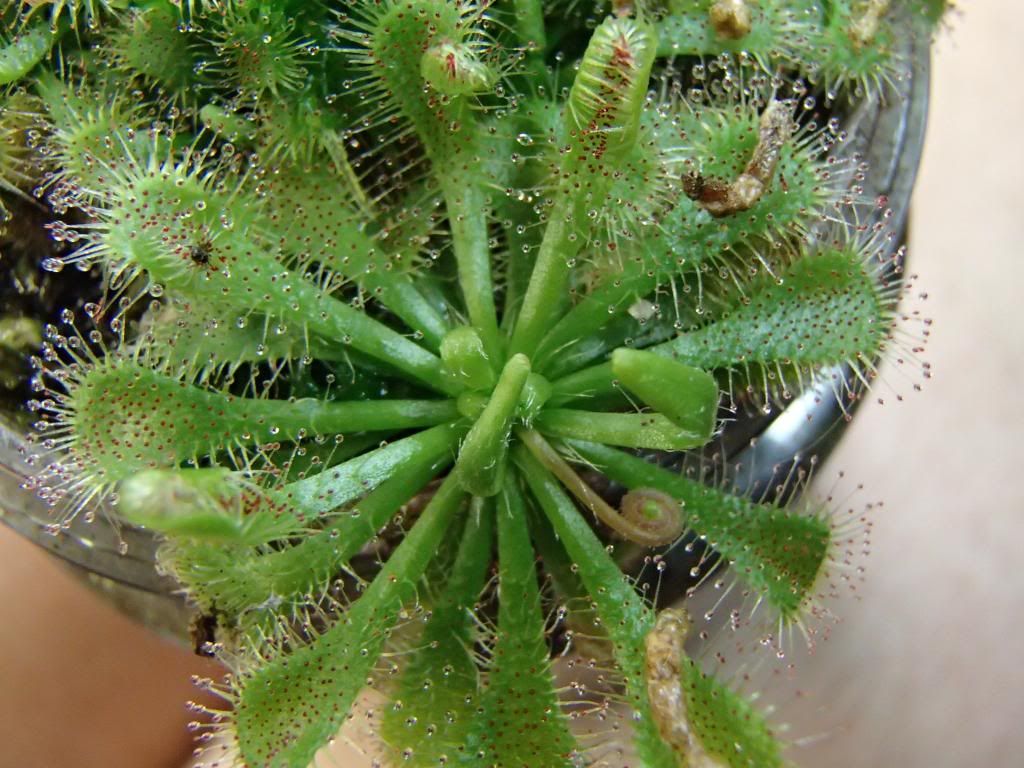 And D. madagascariensis have finally started looking okay again 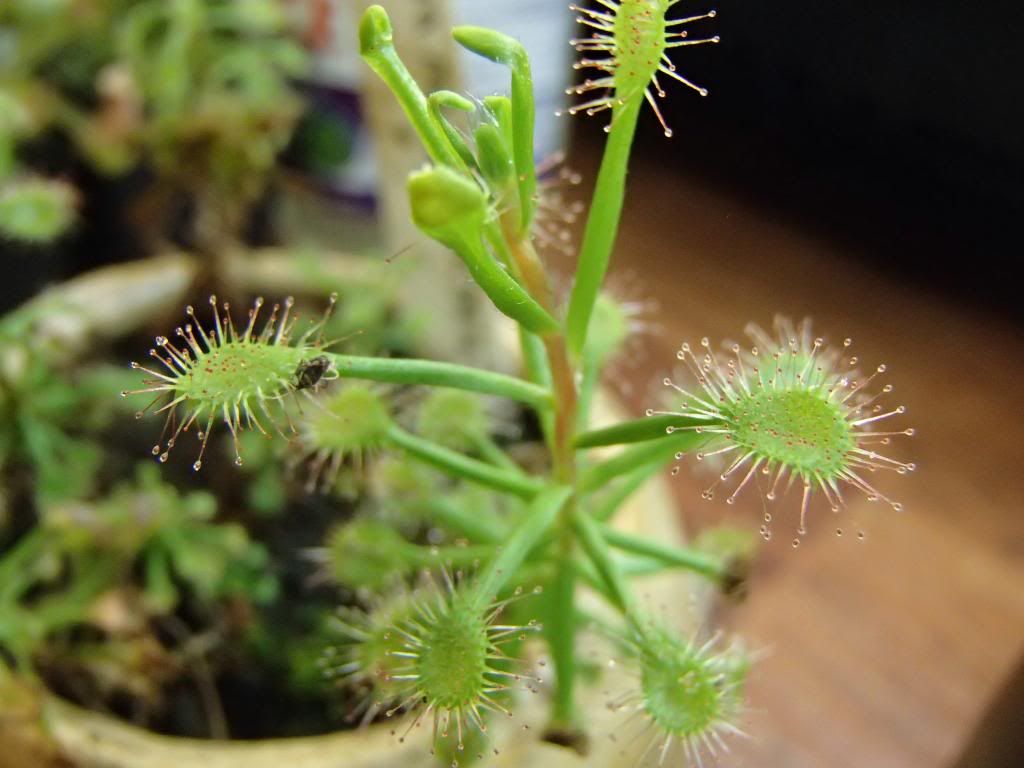 |
|
|
|
Post by Dave Evans on Jul 2, 2014 21:21:00 GMT
D. indica scented flower  This cannot be D. indica. D. I. has petioles without traps. This plant doesn't... |
|
|
|
Post by Dave Evans on Jul 2, 2014 21:25:31 GMT
D. sessilifolia  . Key feature of D. sessilifolia is the folia (leaves) are (sessile) stalk-less; meaning no discernible petiole. Your plants do have clear petioles on each and every leaf. D. sessilifolia looks like a mini D. slackii (has very wide petioles). Checkout this thread: www.cpukforum.com/forum/index.php?showtopic=48906 |
|
|
|
Post by hcarlton on Jul 3, 2014 6:38:04 GMT
Dave, the D. indica I received as seeds from a person who grew them out multiple generations, and there has been no other name suggested for such a plant, unless you have taken time to separate all the supposed species out of the complex currently considered D. indica. Considering the wide range of this species, surely there are multiple species, but no one has bothered to describe them yet, and so as of right now you cannot expect every plant under this name to have the exact same type of leaf structure. Also, the D. sessilifolia I grew from seeds received from the ICPS seed bank, supposedly donated by the manager himself who has been growing the plants for a number of years. There are notable differences between these plants and the two forms of burmannii I have, including the very similar 'Pilliga Red,' both of which have pink flowers. Normally they don't have much of a petiole, but the flower stalks keep mysteriously aborting and this has caused them to grow unusually large, lengthy leaves, though admittedly I would not be surprised if they turn out instead to be the hybrid.
Also, I highly disagree about sessilifolia looking like slackii, as the latter has notable very wide petioles ending in the obovate lamina.
|
|
|
|
Post by John Brittnacher on Jul 3, 2014 16:36:49 GMT
|
|
|
|
Post by hcarlton on Jul 3, 2014 17:37:45 GMT
Well, then, I would be perfectly happy to hear if anyone has true D. sessilifolia seeds I can get to replace these if they are in fact another pink flowered form of burmannii. Again, I did get these from the ICPS when it was supposedly confirmed the seeds were from some form of sessilifolia. And I really have to disagree with the lighting. While they are not in full sunlight, every plant around them is very happy and red in color. D. tomentosa is a deep olive green with wine red tentacles, D. natalensis is fully red blushed on many plants and numerous Sarracenia seedlings are fully colored in the same light levels. D. burmannii is also well known for losing a great deal of its color if it is fed regularly, and I do so with all my plants.
If someone wants to donate a couple high-power lights just so that things really color up I'd be perfectly happy with that of course, but I am limited myself to what kinds of equipment I can purchase at the moment, and considering the vast majority of my collection seems to be doing well where it is I see no reason to currently increase my out-of-pocket lighting costs.
|
|
|
|
Post by Dave Evans on Jul 3, 2014 22:37:56 GMT
Dave, the D. indica I received as seeds from a person who grew them out multiple generations, and there has been no other name suggested for such a plant, unless you have taken time to separate all the supposed species out of the complex currently considered D. indica. Considering the wide range of this species, surely there are multiple species, but no one has bothered to describe them yet. This isn't accurate. There are several names already published. Let's see, we have: Drosera serpens from 1848 Drosera finlaysoniana from 1828 Drosera minor from 1827 Drosera angustifolia from 1855 Drosera hexaginia from 1854 Drosera metziana from 1913 and Drosera makinoi from 1932 And please read this from 2013: www.researchgate.net/publication/259151473_Typification_and_application_of_names_in_Drosera_section_Arachnopus_(Droseraceae)The second species discussed in the paper is D. finlaysoniana which they mention does not have petioles!!! And D. angustifolia is supposedly a later synonym of D. finlaysoniana. So now, while no one else noticed the lack of petioles, I am suggesting you take a look and see if it isn't D. finlaysoniana.  From reviewing it, it would seem at least two other people back in the 1800's already noticed it is a species different from D. indica. |
|
|
|
Post by hcarlton on Jul 4, 2014 5:10:37 GMT
Okay, I would have thought someone would have brought this paper to the attention of the CP community before now if these names are currently being accepted. In any case, I will be leaving it labeled as is for the time being, until I can read a paper where I don't have to log in to anything, and I can compile a proper file in my collection for such a species if I find enough info to support it. Currently I find the name listed as extant in use by florabase and a couple other sites, but most consider it to be a synonym currently under the widely variable indica name.
|
|
|
|
Post by hcarlton on Jul 4, 2014 5:12:27 GMT
I also do not have current evidence that these seeds came from plants originating in Australia, which would also have to be verified somehow in order to label it as D. finlaysoniana. Also, it appears my plants differ in having pink flowers while that one appears to have white flowers in most of the references I am finding elsewhere.
|
|
|
|
Post by Not a Number on Jul 4, 2014 6:45:58 GMT
You can download the article from the Department of Parks and Wildlife of Western Australia website. I had read this article December of last year but couldn't remember the title to find it on my computer. Thanks Dave. The journal Nuytsia is hosted on the DPaW website. florabase.dpaw.wa.gov.au/science/nuytsia/691.pdfYou might also want to read the earlier paper "Morphological variation within the Drosera indica (Droseraceae) complex in northern Australia" It's available for download on Aidan's website. |
|
|
|
Post by Dave Evans on Jul 5, 2014 19:58:37 GMT
I also do not have current evidence that these seeds came from plants originating in Australia, which would also have to be verified somehow in order to label it as D. finlaysoniana. Also, it appears my plants differ in having pink flowers while that one appears to have white flowers in most of the references I am finding elsewhere. The description does say pink petals. Same for the next species, D. serpens. Lumping doesn't work in CP's. The only reason they are saying it is called D. indica is because they didn' really review the plants! Calling eight different species "a variable widespread species" doesn't make much sense to me... I was unaware of these articles either. I looked for them after you posted a photograph of a plant you're calling D. indica without petioles. This break in normal features is what I call a red flag for the ID. I know for a fact D. indica has petioles from reviewing photos of the type. I was unaware of the name D. finlaysoniana, until you gave me a reason (the photo) to look for the name of your plant. Also, you say it has fragrant flowers, again, I'm not familiar with scented flowers being present on D. indica. The seeds are supposedly diagnostic, if you have a jeweler's loop, or one of those toy microscopes, you can clearly see the seed coat. Wouldn't be a bad tool to use to look at your hybrid seeds to see if there are any special characteristics they show... I found this photo and it isn't D. indica either: 4.bp.blogspot.com/_ksEBtBOCBHA/TAIKRu698II/AAAAAAAACts/XXaOHH4mg3c/s1600/Sundew-Drosera-indica_09.gifand not sure about this: www.kinmatsu.idv.tw/show.php?f=plant/Dilleniidae/Drosera.indicaBut these are, or at least resemble D. indica: carnivorousockhom.blogspot.com/2011/10/crimson-drosera-indica-in-koh-kong.html See, the spidery look is present in all species of Arachonopus, but some authors have made the mistake of believing the whole section is just one species, like _Aldrovanda_ or _Dionaea_ willfully ignoring data which says otherwise. In their minds, they have synonymized the whole section Arachonopus with the single species Drosera indica!!! This is like running science in reverse. |
|
|
|
Post by hcarlton on Jul 5, 2014 21:42:22 GMT
I did read the article, and I did find the description of flower color as matching my own. After reviewing the paper I will agree the species described to make sense, though currently that really only leaves 4 species in the section that are to be recognized. I will probably relabel the plants I have, as it appears the description fits.
|
|
|
|
Post by Dave Evans on Jul 6, 2014 4:59:36 GMT
Like the authors mention, there are more species in section Arachonopus they haven't studied, but are somewhere aware of. So far we have got D. finlaysoniana, D. hartmeyerorum, D.serpens. With D. indica not being found in Australia. Plus the other two, the authors did not look at which are not from Australia... One from India and one from Japan--I'm willing to bet they aren't the same species. In the photo below, we see two kinds of "indica". Red and green rosettes. However, the color is not the only difference I see. I see the internodes are also a different length and the green plants hold fewer leaves. I would really like to see these plants in person because something seems off to me. 2.bp.blogspot.com/-Kf4KQ0_7Lsk/TqHIk4CMp-I/AAAAAAAACCk/Ymu8tC0Fmzo/s1600/P1320015.JPG |
|
coline
Full Member
Life's essence: patience
Posts: 484 
|
Post by coline on Jul 6, 2014 13:49:47 GMT
Then I also don't have D. indica since my plants have no petioles on the leaves, these came also from the seedbank from the seeds labeled as D. indica 'white flower'  |
|







